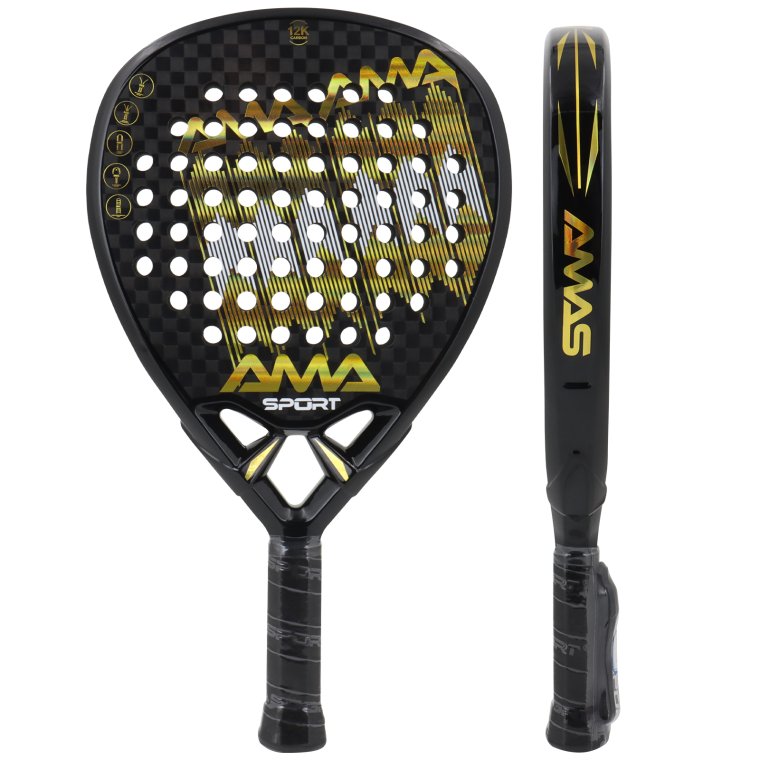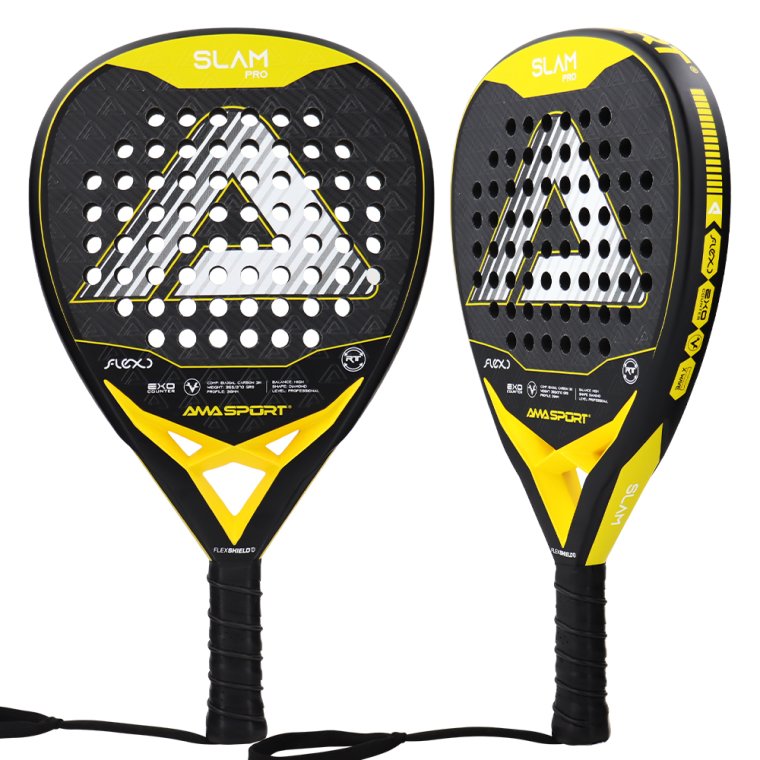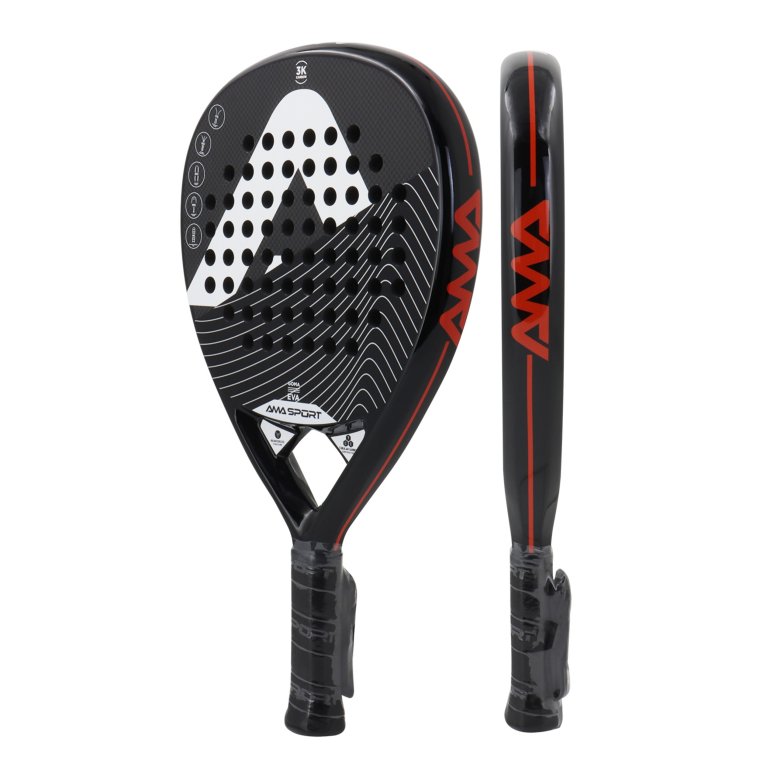In the world of padel, the choice of racket has a huge impact on a player's performance on the court. Of the various materials available, carbon fiber has become the top choice for high-performance paddle tennis rackets. This article takes an in-depth look at the properties, benefits, and types of carbon fiber used in paddle tennis rackets to help you understand why this material is regarded as the backbone of modern paddle tennis equipment.
What is Carbon Fiber?
Carbon fiber is a lightweight, high-strength material made from thin strands of carbon atoms. These strands are woven together to create a composite material that is not only incredibly strong but also remarkably light. This unique combination makes carbon fiber an ideal choice for sports equipment, including padel rackets.

Properties of Carbon Fiber
Strength-to-Weight Ratio: One of the most notable characteristics of carbon fiber is its exceptional strength-to-weight ratio. This means that carbon fiber rackets can withstand significant stress while remaining lightweight, allowing for quicker swings and improved maneuverability on the court.
Durability: Carbon fiber is resistant to wear and tear, making it less likely to break or suffer damage during intense play. This durability ensures that players can rely on their rackets for longer periods without needing frequent replacements.
Stiffness and Responsiveness: The stiffness of carbon fiber contributes to its responsiveness during play. When a player strikes the ball, energy transfer is efficient, resulting in powerful shots and enhanced control.
Vibration Dampening: High-quality carbon fiber rackets often incorporate technology to dampen vibrations upon impact. This feature helps reduce arm fatigue and provides a more comfortable playing experience.
Why Choose Carbon Fiber Padel Rackets?
Enhanced Performance
Carbon fiber rackets are designed to elevate a player's game through improved performance attributes:
Power: The stiffness of carbon fiber translates into greater power on shots, allowing players to hit the ball harder with less effort.
Control: The precision offered by carbon fiber construction helps players place their shots with accuracy, essential for competitive play.
Speed: The lightweight nature of carbon fiber enables quicker reactions and faster movements on the court, which is crucial during fast-paced rallies.
Longevity and Investment
While carbon fiber rackets typically come with a higher price tag than their fiberglass counterparts, their durability makes them a worthwhile investment for serious players. A well-maintained carbon fiber racket can last significantly longer than one made from fiberglass, ultimately saving money over time.

Types of Carbon Fiber Used in Padel Rackets
Not all carbon fibers are created equal; different types offer varying benefits suited to different playing styles and levels. Here’s an overview of the most common types used in padel rackets:
1. 3K Carbon
3K carbon consists of 3,000 filaments woven together, providing a balance between stiffness and flexibility. It is often used in mid-range rackets and is suitable for players who seek both power and control without sacrificing comfort.
2. 6K Carbon
With 6,000 filaments, this type of carbon offers increased stiffness compared to 3K. It provides enhanced power and stability, making it ideal for advanced players who generate high swing speeds and require maximum control over their shots.
3. 12K Carbon
12K carbon features 12,000 filaments woven together, resulting in excellent power and stability. This type is favored by aggressive players who rely on strength and speed to dominate matches.
4. 18K Carbon
18K carbon consists of 18,000 filaments and offers exceptional stiffness and performance characteristics. It is typically reserved for professional players who demand the highest level of precision and responsiveness from their equipment.
5. 24K Carbon
The highest grade available, 24K carbon includes 24,000 filaments woven together. It provides unmatched power transfer and control but may feel less forgiving due to its rigidity. This type is suited for elite players who have mastered their technique and require top-tier performance from their rackets.

Choosing the Right Carbon Fiber Racket
When selecting a https://www.amasport.com/AMA-P101-Padel-Racket.html made from carbon fiber, players should consider several factors:
Playing Style: Aggressive players may benefit from stiffer options like 12K or 18K carbon for maximum power, while those who prioritize control might prefer the versatility of 3K or 6K options.
Skill Level: Beginners might find more comfort in lower-grade carbon or even fiberglass options that offer greater forgiveness during play.
Physical Considerations: Players with arm issues may want to explore models designed with vibration dampening features or softer materials that reduce impact strain.
Conclusion
Carbon fiber is transforming paddle tennis racquet design and performance, with its unique properties – strength-to-weight ratio, durability, responsiveness – combining to create a racquet that not only performs well but also stands the test of time.
What Unique Advantages do Carbon Fiber Padel Rackets Offer Compared to Other Materials





